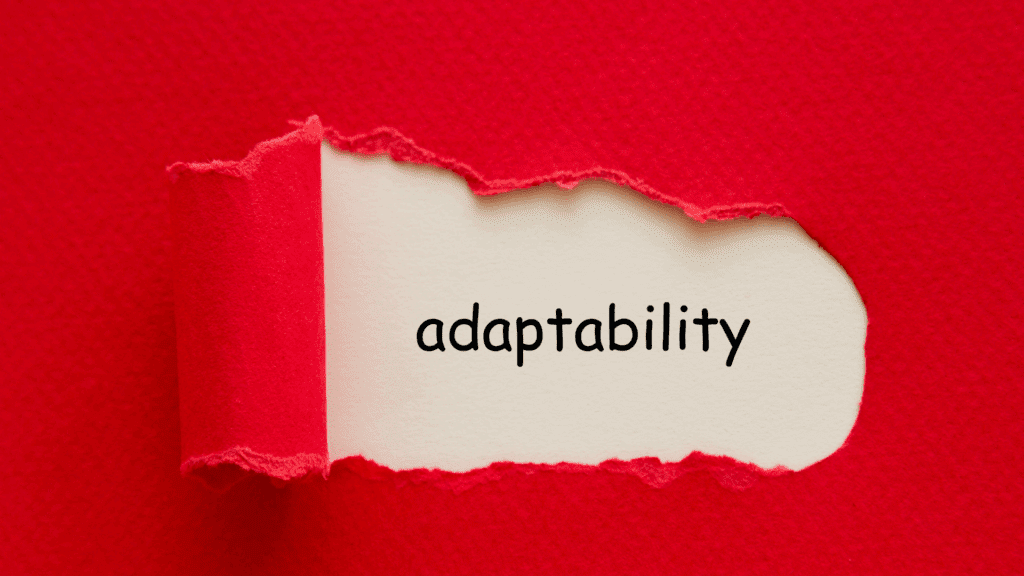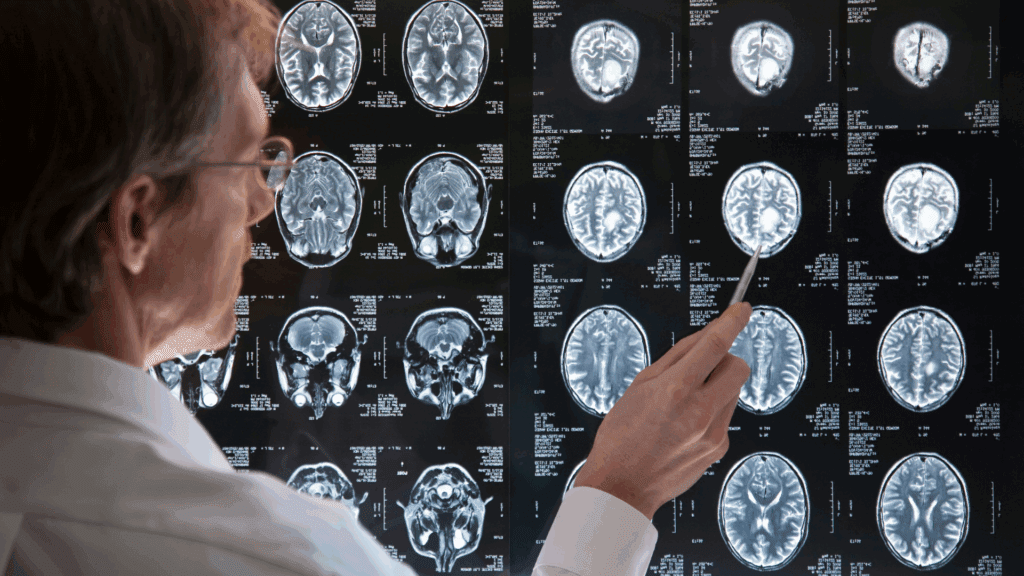Why the Neuroscience of Anxiety Matters in Today’s World
Anxiety is more than a fleeting feeling or a clinical diagnosis—it’s a deeply rooted brain state that touches every aspect of our lives, from our relationships and careers to our sense of self. The neuroscience of anxiety offers a window into why we worry, freeze, or overthink, and why these patterns persist even when we know they’re unhelpful. As a neuropsychologist specializing in personal and professional development, I see firsthand how understanding the brain’s role in anxiety can transform lives. In this article, I’ll take you inside the latest neuroscience, evolutionary theory, and real-world stories—including a client’s journey—to reveal how anxiety is wired into us, and how we can use this knowledge for growth.
The Brain’s Anxiety Circuitry: Amygdala, Prefrontal Cortex, and Beyond
At the core of the neuroscience of anxiety is a network of brain regions that orchestrate our responses to perceived threats. The amygdala, a small, almond-shaped structure located deep in the temporal lobe, serves as the brain’s alarm system. When it detects potential danger—real or imagined—it triggers a cascade of physiological and psychological responses, including a rapid heartbeat, tense muscles, racing thoughts, and heightened alertness. The amygdala communicates with the hypothalamus to activate the body’s stress response, and with the prefrontal cortex, which is responsible for rational thought and decision-making.
The prefrontal cortex, particularly the medial and dorsolateral regions, plays a key role in regulating the amygdala’s alarm signals. When functioning optimally, it helps us evaluate threats logically and decide whether to act, wait, or let go. However, in individuals with anxiety, the balance between the amygdala and the prefrontal cortex is often disrupted. The amygdala becomes overactive, while the prefrontal cortex struggles to exert control, leading to persistent worry, rumination, and avoidance behaviors.
Recent research has also highlighted the importance of the bed nucleus of the stria terminalis (BNST), a region linked to sustained anxiety and anticipation of uncertain threats. Unlike the amygdala, which responds to immediate dangers, the BNST keeps us on alert for more extended periods, fueling the kind of chronic anxiety that can interfere with daily life.

How does evolution influence the way we experience anxious thoughts and feelings?
The neuroscience of anxiety is deeply rooted in our evolutionary history. Our brains did not develop in a vacuum; they were shaped by countless generations facing real and immediate threats. In the earliest human environments, the neuroscience of anxiety served as a survival tool, priming our ancestors to respond quickly to dangers such as predators or environmental hazards. This adaptive response, governed by the amygdala and related neural circuits, allowed early humans to avoid life-threatening situations. Evolution favored individuals whose brains could anticipate threats, resulting in the sophisticated anxiety responses we observe today.
However, the modern world rarely presents the same immediate dangers. The neuroscience of anxiety now often reacts to abstract or chronic stressors—deadlines, social pressures, and uncertainty about the future. This evolutionary mismatch explains why the neuroscience of anxiety can feel overwhelming or out of proportion to current circumstances. Our brains are still wired for a world of acute dangers, not the complex, delayed-return environment we inhabit today. The evolutionary perspective on the neuroscience of anxiety helps us understand why anxious feelings are so persistent and why they can be triggered by situations that are not life-threatening but still perceived as significant by our ancient neural machinery.
Genetic studies further reveal that certain variations in neurotransmitter systems, such as serotonin and dopamine, have evolved to influence the neuroscience of anxiety differently in individuals. This means that some people are more predisposed to anxiety due to their evolutionary heritage. Recognizing this can foster self-compassion and a more nuanced approach to managing the neuroscience of anxiety in our daily lives.
In what ways do social wiring and relationships shape anxiety patterns in my brain?
The neuroscience of anxiety is not just about individual survival—it is also about social connection. Human beings are inherently social, and our brains have evolved to prioritize relationships, group cohesion, and social status. The neuroscience of anxiety reflects this by activating neural pathways that monitor social cues, anticipate rejection, and motivate us to maintain our place within a group.
Research shows that the amygdala, a central player in the neuroscience of anxiety, is highly responsive to social signals. Experiences of social exclusion, criticism, or even subtle disapproval can trigger the same neural circuits as physical threats. This means the neuroscience of anxiety is deeply intertwined with our sense of belonging and acceptance. Social wiring ensures that anxiety motivates us to conform to group norms, avoid behaviors that might lead to exclusion, and invest in relationships that provide safety and support.
Furthermore, the neuroscience of anxiety reveals that positive social connections can buffer against anxious feelings. When we feel supported, our brains release neurochemicals that reduce the intensity of anxiety responses. Conversely, social isolation or conflict can heighten the neuroscience of anxiety, making us more vulnerable to chronic worry and stress. Understanding how social dynamics influence the neuroscience of anxiety empowers us to seek out relationships and environments that foster resilience and emotional well-being.

Evolutionary Roots: Why Anxiety Exists and How It Helped Our Ancestors
The neuroscience of anxiety cannot be separated from its evolutionary origins. Anxiety is not a malfunction—it’s an adaptation that has helped humans survive for thousands of years. In our ancestral environment, those who were more vigilant and sensitive to potential threats were more likely to avoid predators, find food, and protect their offspring. The amygdala’s rapid-fire alarm system evolved to detect subtle cues of danger, while the prefrontal cortex developed to help us plan, cooperate, and innovate.
During the so-called Great Leap Forward in human evolution, our ancestors’ brains expanded not only in size but also in complexity. This period saw the emergence of abstract thinking, language, art, and larger social groups. Anxiety evolved from a simple fear response to a more nuanced system that could anticipate future threats, navigate complex social hierarchies, and foster group cohesion. Some evolutionary psychologists argue that anxiety about social rejection, exclusion, or failure played a crucial role in binding individuals to their communities, ensuring cooperation and survival.
Today, the same neural circuits that once protected us from predators are activated by emails, deadlines, and social media notifications. Our brains are exquisitely tuned to detect uncertainty and ambiguity, which in the modern world often translates into chronic, low-grade anxiety.
Why Viewing Anxiety as an Adaptive Tool Is Essential for Thriving
Viewing anxiety as an adaptive tool is essential for thriving in today’s world, and the neuroscience of anxiety provides compelling evidence for this perspective. When we understand anxiety through the lens of neuroscience, we see that it is not simply a malfunction or a weakness. Still, a finely tuned system designed to help us navigate uncertainty, detect potential threats, and motivate proactive behavior. The neuroscience of anxiety shows that our brains have evolved to use anxious signals as early warning systems, prompting us to prepare, plan, and problem-solve in the face of challenges. This adaptive function is especially crucial in a rapidly changing, high-pressure environment where flexibility and resilience are key to success.
In the context of the neuroscience of anxiety, viewing anxious feelings as adaptive allows us to reframe our experiences. Instead of seeing anxiety as something to be avoided or suppressed, we can recognize its value as a driver of growth and innovation. The neuroscience of anxiety reveals that moderate levels of anxiety can enhance alertness, sharpen focus, and increase motivation, all of which are vital for personal and professional development. Leaders, entrepreneurs, and high-achieving professionals often harness the neuroscience of anxiety to anticipate risks, make strategic decisions, and stay ahead in competitive fields.

Moreover, the neuroscience of anxiety highlights the importance of self-awareness and emotional regulation. By acknowledging the adaptive role of anxiety, individuals can develop healthier coping strategies, build resilience, and cultivate a growth mindset. The neuroscience of anxiety encourages us to listen to our internal signals, assess our environment, and take constructive action rather than being paralyzed by fear. This proactive approach transforms anxiety from a barrier into a resource, empowering us to adapt and thrive in the face of uncertainty.
In today’s interconnected and unpredictable world, the neuroscience of anxiety underscores the need for adaptability and continuous learning. Those who view anxiety as an adaptive tool are better equipped to handle setbacks, embrace change, and pursue new opportunities with confidence. The neuroscience of anxiety teaches us that thriving is not about eliminating anxious feelings but about leveraging them as catalysts for self-improvement, creativity, and meaningful achievement. By integrating this understanding into daily life, we can unlock the full potential of the anxious brain and position ourselves for lasting success in a complex world.
The Social Brain: How Group Dynamics and Belonging Fuel Anxiety
Humans are wired for connection. Our brains have evolved to thrive in groups, and much of our anxiety is rooted in social concerns—what others think of us, whether we belong, and how we measure up. The neuroscience of anxiety reveals that social rejection or criticism activates many of the same brain regions as physical pain. The anterior cingulate cortex, for example, becomes active when we experience social exclusion, mirroring the distress associated with a physical injury.
This social dimension of anxiety makes sense from an evolutionary perspective. For our ancestors, being ostracized from the group could mean death. As a result, our brains developed powerful mechanisms to monitor social cues, anticipate others’ reactions, and motivate us to conform to group norms. While this system helped our species survive, it also makes us vulnerable to modern stressors, such as public speaking, networking events, and online interactions.
In my practice, I often see high-achieving professionals whose anxiety is driven not by actual threats but by fears of not meeting expectations or being judged. Understanding the neuroscience behind these social anxieties can be a game-changer, allowing individuals to reframe their experiences and build resilience.

Trait Anxiety vs. State Anxiety: Different Paths in the Brain
Not all anxiety is created equal. Neuroscientists distinguish between trait anxiety—a stable, enduring tendency to experience anxiety across situations—and state anxiety, which is a temporary response to a specific stressor. Trait anxiety is linked to structural and functional differences in the brain, especially in the limbic system, prefrontal cortex, and default mode network. Individuals with high trait anxiety often have heightened amygdala activity and reduced prefrontal regulation, making them more sensitive to stress and more likely to engage in negative thinking.
State anxiety, on the other hand, is a fleeting experience that arises in response to a particular event, such as an important meeting or a sudden change. While both forms of anxiety involve similar brain circuits, they differ in duration, intensity, and impact on daily functioning. Understanding this distinction is crucial for personal development, as it allows us to identify whether our anxiety is a deep-seated pattern or a situational reaction.
Neuroplasticity and the Brain’s Capacity for Change
One of the most exciting discoveries in the neuroscience of anxiety is the brain’s remarkable ability to change and adapt—a phenomenon known as neuroplasticity. Neural circuits involved in anxiety are not fixed; they can be rewired through new experiences, learning, and intentional practice. This means that even individuals with a lifelong tendency toward anxiety can develop new patterns of thinking, feeling, and behaving.
Research indicates that repeated activation of the prefrontal cortex—through practices such as mindfulness, self-reflection, and goal setting—can strengthen its connections with the amygdala, thereby enhancing emotional regulation and reducing anxiety. Similarly, social support, positive relationships, and a sense of purpose can reshape the brain’s response to stress, fostering resilience and well-being.
The Stress-Anxiety Connection: How the Brain Links Pressure and Worry
Stress and anxiety are closely intertwined, both behaviorally and neurologically. When we encounter a stressor, the hypothalamic-pituitary-adrenal (HPA) axis responds, releasing cortisol and other stress hormones that prepare the body for fight or flight. In the short term, this response is adaptive, sharpening our focus and mobilizing energy. However, chronic activation of the stress response can lead to persistent anxiety, as the brain becomes hypervigilant and less able to distinguish between real and imagined threats.
The locus coeruleus, a brainstem region that produces norepinephrine, plays a key role in this process. It communicates with the amygdala and other limbic structures to heighten alertness and emotional reactivity. Over time, repeated stress can sensitize these circuits, making the brain more prone to anxiety and less responsive to calming signals from the prefrontal cortex.
Understanding the connection between stress and anxiety is vital for personal and professional development. By learning to recognize early signs of stress and employing strategies to regulate the nervous system, individuals can prevent the escalation of anxiety and maintain optimal performance.

How Anxiety Shapes Motivation, Decision-Making, and Performance
The neuroscience of anxiety reveals that anxious states can have both positive and negative effects on motivation and decision-making. On one hand, moderate levels of anxiety can enhance focus, drive, and problem-solving, especially when the stakes are high. The brain’s threat detection system mobilizes resources, increases vigilance, and sharpens attention to detail.
On the other hand, excessive or chronic anxiety can impair cognitive flexibility, creativity, and executive function. When the amygdala dominates, the prefrontal cortex’s capacity for rational thought and long-term planning is compromised. This can lead to indecision, avoidance, and a tendency to focus on worst-case scenarios.
In the workplace, anxiety often manifests as perfectionism, procrastination, or difficulty delegating tasks. Leaders and professionals who understand the neuroscience behind these patterns are better equipped to manage their anxiety and support their teams.
A Client’s Story: Rewiring the Anxious Brain for Growth
One of my clients, whom I’ll call Sarah, came to me struggling with persistent anxiety that was affecting her career and relationships. She described a constant sense of dread, difficulty sleeping, and a tendency to overthink every decision. Despite her achievements, she felt like an impostor, always waiting for the other shoe to drop.
Through our work together, we explored the neuroscience of her specific anxiety, and how both real and imagined threats were triggering her brain’s alarm system. We identified patterns of thought and behavior that reinforced her anxiety, such as catastrophizing, seeking reassurance, and avoiding challenging situations.
By focusing on personal development strategies rooted in neuroscience, Sarah learned to activate her prefrontal cortex, challenge unhelpful beliefs, and build new neural pathways. Over time, she developed greater self-awareness, emotional regulation, and confidence. Today, Sarah reports feeling more grounded, resilient, and able to face uncertainty with curiosity rather than fear.
The Role of Genetics and Early Life Experiences in Shaping Anxiety
The neuroscience of anxiety also highlights the influence of genetics and early life experiences. Some individuals are born with a heightened sensitivity to threat, due to genetic variations that affect neurotransmitter systems, brain structure, and stress reactivity. For example, differences in serotonin, dopamine, and norepinephrine signaling can predispose individuals to anxiety.
Early life experiences, such as attachment patterns, trauma, or chronic stress, can further shape the development of the brain’s anxiety circuits. Children who grow up in unpredictable or unsafe environments may develop a hyperactive amygdala and a less responsive prefrontal cortex, making them more vulnerable to anxiety later in life.
Understanding these factors is crucial for cultivating self-compassion and fostering personal growth. Recognizing that anxiety is not a personal failing, but a complex interplay of biology and experience, can empower individuals to seek support and pursue meaningful change.

The Power of Self-Awareness and Mindset in Transforming Anxiety
While the neuroscience of anxiety explains why we feel the way we do, it also points to the power of self-awareness and mindset in shaping our experiences. The brain is constantly interpreting and reinterpreting information from the environment, and our beliefs, expectations, and attitudes play a critical role in this process.
Individuals who cultivate a growth mindset—believing that their abilities and emotions can change—are more likely to engage in behaviors that promote resilience and well-being. By becoming aware of their triggers, thought patterns, and bodily sensations, they can interrupt the cycle of anxiety and choose more adaptive responses.
In my coaching practice, I encourage clients to view anxiety as a signal, not a sentence. By listening to what their anxiety is trying to communicate—whether it’s a need for connection, safety, or growth—they can harness its energy for positive change.
Anxiety and Group Cohesion: The Hidden Upside of Worry
One of the most fascinating insights from evolutionary neuroscience is the idea that anxiety, while often uncomfortable, has played a crucial role in fostering group cohesion and loyalty. In early human societies, individuals who worried about their standing within the group and anticipated potential conflicts or threats were more likely to contribute to the community’s survival and success.
Anxiety-motivated individuals tend to conform to group norms, avoid behaviors that could lead to exclusion, and invest in maintaining relationships. Even today, the desire to belong and the fear of rejection drive much of our behavior, from the clothes we wear to the opinions we express.
While excessive anxiety can be debilitating, a moderate level of social concern can enhance empathy, cooperation, and collective problem-solving. Understanding this hidden upside allows us to reframe anxiety as a resource, rather than a weakness.
The Future of Anxiety Research: New Frontiers in Neuroscience
The field of anxiety neuroscience is rapidly evolving, with discoveries shedding light on the intricate networks and mechanisms that underlie anxious states. Advances in neuroimaging, genetics, and computational modeling are revealing how different brain regions communicate, how individual differences shape anxiety, and how targeted interventions can promote resilience.
Researchers are exploring the role of specific cell types in the amygdala, the impact of neuroplasticity on anxiety reduction, and the potential for personalized approaches to managing anxiety based on brain structure and function. These breakthroughs hold promise for developing more effective strategies for personal and professional growth.

Practical Insights: Applying the Neuroscience of Anxiety to Daily Life
Understanding the neuroscience of anxiety is not merely an academic exercise—it has profound implications for how we live, work, and interact with others. By recognizing the brain circuits involved in anxiety, the evolutionary reasons for our worries, and the social dynamics that fuel them, we can develop practical strategies for managing anxiety and enhancing well-being.
One of the most powerful actions you can take is to build self-awareness. Start by noticing when anxiety arises, what triggers it, and how it manifests in your body and thoughts. Keeping a daily journal or using a mood-tracking app can help you identify patterns and gain insight into your personal neuroscience of anxiety. This awareness is the first step toward change.
Fostering supportive relationships is another essential strategy. Reach out to trusted friends, family members, or colleagues when you notice anxiety building. Sharing your experiences can help reduce the sense of isolation that often accompanies anxious feelings. The neuroscience of anxiety shows that social connection releases neurochemicals that calm the brain’s alarm system, making support networks a vital part of your toolkit.
Engaging in regular physical activity is a proven way to regulate the neuroscience of anxiety. Activities like brisk walking, cycling, or even stretching can help discharge excess energy, balance neurotransmitters, and restore a sense of calm. Aim for at least 20–30 minutes of movement most days to support both brain and body.
Pursuing meaningful goals can also transform your relationship with anxiety. When you set intentions that align with your values, you give your brain a sense of purpose and direction. Break larger goals into smaller, manageable steps, and celebrate each achievement. This approach leverages the neuroscience of anxiety by shifting focus from worry to action, building confidence and resilience over time.
Incorporate daily practices that regulate your nervous system, such as deep breathing, progressive muscle relaxation, or mindfulness exercises. These techniques activate the prefrontal cortex and help quiet the amygdala, allowing you to respond rather than react to stressors. Even a few minutes each day can make a significant difference in how you experience the neuroscience of anxiety.
Finally, create an environment that supports brain health. Prioritize quality sleep, maintain a balanced diet, and limit screen and social media overstimulation. The neuroscience of anxiety underscores the importance of a stable routine and healthy habits in maintaining emotional equilibrium.
By integrating these science-backed actions into your daily routine, you can harness the neuroscience of anxiety to foster growth, adaptability, and well-being. Each step you take builds new neural pathways, turning anxiety from a source of distress into a powerful ally for personal and professional development.
What practical strategies from neuropsychology can help
Applying insights from the neuroscience of anxiety can lead to powerful, practical strategies for personal and professional development. One of the most effective approaches is increasing self-awareness—recognizing the triggers and patterns that activate the neuroscience of anxiety in your brain. Keeping a journal of anxious thoughts and situations can help identify recurring themes and provide a foundation for targeted change.
Neuropsychology also highlights the importance of regulating the nervous system. Techniques such as deep breathing, progressive muscle relaxation, and mindfulness are proven to calm the neural circuits involved in the neuroscience of anxiety. These practices strengthen the prefrontal cortex’s ability to manage signals from the amygdala, reducing the frequency and intensity of anxious episodes.
Building strong social connections is another neuropsychological strategy that directly impacts the neuroscience of anxiety. Engaging with supportive friends, family, or professional networks can provide emotional safety and counteract the isolating effects of anxiety. Setting meaningful goals and focusing on purposeful activities also redirects the brain’s attention away from worry, leveraging the neuroscience of anxiety to motivate and foster growth.
As a neuropscientist specializing in personal development and life coaching, I have seen clients transform their lives by applying these strategies. By understanding and working with, NOT against, the neuroscience of anxiety, individuals can shift from feeling controlled by anxiety to using it as a catalyst for resilience and achievement.
Harnessing the Power of the Anxious Brain for Personal and Professional Development
Whether you’re a leader navigating high-pressure environments, a professional seeking greater confidence, or someone striving for personal growth, the insights from neuroscience offer a roadmap for harnessing the power of the anxious brain. With knowledge, self-compassion, and intentional action, it’s possible to turn anxiety into an ally on the journey to fulfillment and success.
The neuroscience of anxiety reveals that our brains are not our enemies—they are complex, adaptive systems designed to keep us safe, connected, and motivated. By understanding how anxiety operates at the neural, evolutionary, and social levels, we can transcend fear and limitation, embracing the full potential of the human mind.
Embracing the anxious brain means recognizing that every challenge is an opportunity for growth. Anxiety, when understood and managed, can fuel creativity, sharpen focus, and deepen empathy. It encourages us to prepare thoroughly, connect authentically, and push beyond our comfort zones.
By cultivating resilience and a positive mindset, you can transform anxiety from a source of stress into a powerful motivator that drives achievement and well-being. Remember, the anxious brain is a testament to your capacity for awareness and adaptation—qualities that are essential for thriving in today’s complex world.
Harness this power with confidence, knowing that each step forward is a victory over fear, and every moment of discomfort is a sign of your evolving strength. The neuroscience of anxiety is not just about managing symptoms; it’s about unlocking your potential to lead a richer, more purposeful life.
#neuroscience #anxiety #brainhealth #psychology #mentalhealth #neuropsychology #coaching #evolution #stress #motivation #anxietydisorder #generalizedanxietydisorder



